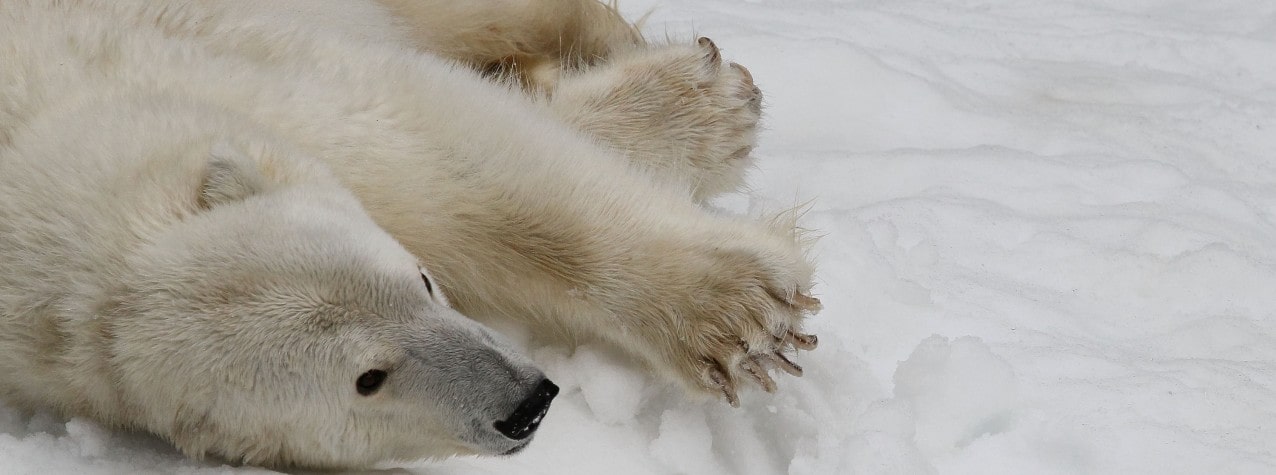

Why The Guardian Killed Their Polar Bear (And You Should Too)
By Neal Moore, Co-Founder & CEO

(This article was first published as ‘Why The Guardian Killed Their Polar Bear (And You Should Too)’ on LinkedIn)
Previously I posted about the Guardian’s amazing new podcast series entitled The Biggest Story In The World, which takes listeners behind the scenes as the media giant plans and executes a campaign to combat climate change. Its great strengths are its candour and excellent use of audio, both of which serve as examples of how to tell a compelling story in an innovative way but in episode six editor Alan Rusbridger delivers a further lesson on the use of imagery. Following another candid discussion with his team he notes:
(Quote) I think on day one we started off with a polar bear but we pretty quickly killed it off. The idea…not the polar bear.
Why? Because the conventional image of a lone polar bear on an ice flow has become so ubiquitous it no longer moves us. Once, that polar bear image was confronting, then it became a convention and now it is merely a cliché. That’s the evolution of a meme and evolution, like climate change, is speeding up.
In an always-on content culture we, as creators and consumers, race through images, headlines and hashtags so quickly that their impact is eroded almost immediately. Hence the need to be original. But being original isn’t easy and when faced with a long to-do list and a short deadline clichés save us precious thinking time, which is why so much marketing and advertising is riddled with them.
One of the most prevalent is the oft-requested “pan-ethnic” talent a.k.a. “pan-Asian” where I’m from. No client has ever really been able to define what pan-Asian means but they insist it is necessary because, using a model that looks like no particular ethnicity is apparently the surest way to make her relatable to all ethnicities. Not only is this completely counterintuitive it also assumes we’re all quite racist and wouldn’t dream of buying a product advertised by someone of a different race! Either way, who do you call when you need a generic “pan-ethnic” talent? Why Ariane of course!

You may recognise Ariane from American insurance advertisements, German dating sites or even Venezuelan airline tweets. In fact she’s now so popular that she has her very own Facebook and Tumblr pages where fans can post pictures of her in ads all over the world.
This all seems like fun and games until you realise that this woman’s face is so ubiquitous across stock image libraries that she has lost the fundamental power of a stock model: anonymity. When you select a stock image you are doing so in the hopes that you can convince the audience that this person, having a spontaneous orgasm, playing a sexy game of peek-a-boo or pretending to be German is doing so because they have had the most fabulous experience with your product or service. Except that we all know that this woman, Ariane, has in all likelihood never used your product or service! She’s probably never even heard of it.
So why, when everybody knows she is not actually a satisfied customer of anything, do marketers continue to use her to advertise seemingly everything? Because her image has evolved into a meme that encapsulates the marketing concept of “pan-ethnic” talent; why look harder?
Received wisdom states that your model must look like your audience and if your audience is regional then he or she needs to look like everybody, but supermodels don’t look like anybody I’ve ever met in real life so who are they supposed to be appealing to? And what about wizards, hobbits and superheroes? We engage with them at length in books, films and comics despite the fact that they’re not even human!
The fact is, a good story is a good story whatever the main character looks like but if the main character has no story, if they are generic, and overexposed then they have no engagement potential at all. Ariane is the banner ad of stock models! She pops up everywhere but no one’s paying any attention. Great stories may be less common than either Ariane or banner ads but they’re so much more engaging that’s it worth the effort to find and tell them whatever the protagonist looks like.
N.B. I have nothing at all against Ariane as an individual, I am sure she is a delightful person enjoying the fruits of her ubiquity, I could just do with seeing a little less of her in Singapore’s MRTs and gyms!








